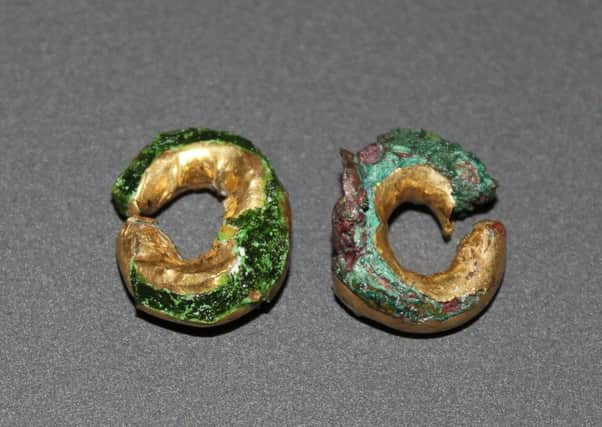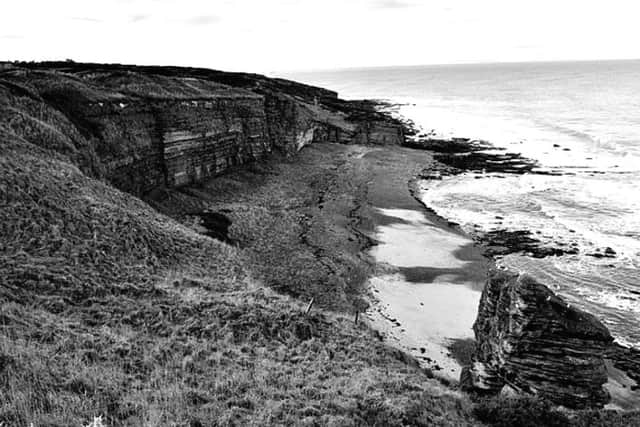The Bronze Age gold hair rings from Scotland's 'death cave'


The items found at Sculptor’s Cave at Covesea near Lossiemouth, Moray, are a valuable indicator of activity at this isolated and hard to reach coastal spot that was used from the Late Bronze Age onwards.
The valuable items lay in the cave for probably around 3,000 years, suggesting there was a ‘taboo’ surrounding the site.
Advertisement
Hide AdA similar ring, in perfect condition, was also found at Clarkly Hill, Burghead, just a few miles away.


Dr Lindsey Buster, an archaeologist at the University of Bradford, who has studied Sculptor’s Cave over several years, recently spoke about the rings in a broadcast for Elgin museum, where the items are kept.
Dr Buster described the “very, very small, but very beautiful” objects made from copper alloy.
Looking at one of the rings, she added: “It is very carefully wrapped in gold foil and would have been a very precious and a very valuable items.


“It was found along with nine other hair rings and carefully placed in a location which is very difficult to access which seems to have been a site for ritual and votive deposition and morturay activity for more than 1,000 years.”
The archaeologist said the rings reflected the earliest activity at the cave. It is believed people travelled here from across the north of Scotland, and perhaps Ireland, to leave their loved ones.
Advertisement
Hide AdThe cave is regarded by some as bridge between the upper world and the underworld and considered an access point to gods and spirits.
The rings were found at the entrance way to the cave where fragments of human skulls also lay.
Advertisement
Hide AdIt is believed that a line of children’s heads may have been on display in this area with bodies laid out to naturally de-flesh.
Dr Buster added: “Some body parts were carefully look after and adorned and left to, essentially, naturally disintegrate.
“What is remarkable about these artefacts is their intrinsic value and the face that they were left in the cave to be recovered by archaeologists today, suggesting there was a taboo going into this place and disturbing the dead that were laid out there.”
The cave is cut off by tides for long periods of time with a boat usually required for the often hazardous trip.
It was described as a place that the “sun never touches” by archaeologist Sylvia Benton who carried out the first detailed excavation there in 1929.
The cave has a long history of use from around 1,100BC, to the Pictish era.
Advertisement
Hide AdOther Bronze Age finds made at the site include armlets, ring money and a swan’s neck pin.
Crucially, a “very large” quantity of human remains, mainly of the young, have been found over time according to the Scottish Archaeological Research Framework.
Advertisement
Hide AdLater, the cave was used as a place for decapitation during the Roman Iron Age with Dr Buster suggesting in an earlier paper that the killings took place at a time of political upheaval after the withdrawal of Roman military from the north of Britain.
The team from Bradford University are now looking at whether Sculptor’s Cave is part of a wider mortuary complex on this stretch of coast. A major report on the site is due out later this year.
